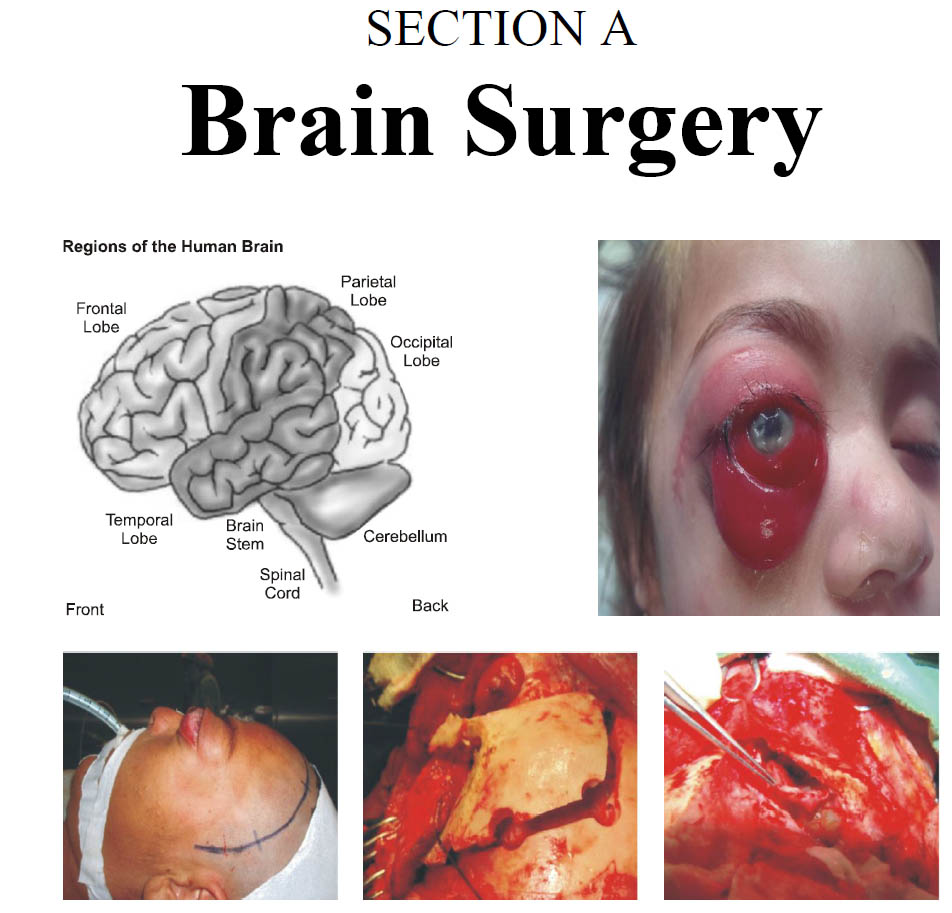Source of Bleeding and Per-Operative Findings in Extradural Hematoma (EDH): A Three-Year Experience in a Teaching Institute
DOI:
https://doi.org/10.36552/pjns.v25i1.505Keywords:
Extradural hematoma, Source of bleeding, Middle meningeal arteryAbstract
Objective: The objective of this study was to analyze the main source of bleeding and operative findings in an extradural hematoma (EDH).
Material and Methods: A descriptive study was conducted at the Neurosurgery Department of Hayatabad Medical Complex Peshawar from March 2017 to April 2020.The study included 550 patients that met the criteria of inclusion well. Demographic profile, location of Extra-Dural hematoma, the source of bleeding, presence or absence of skull fracture and per operative findings were documented in structured proforma.
Results: 69% were male and 31% were female patients. The middle age group of 21 – 40 years mostly affected. Rupture or laceration of middle meningeal artery was the communal source of bleeding in 355 (64.5%) patients, followed by fracture bone in 285 (51.8%) of patients and dural venous sinus in 70 (12.7%) of patients. Preoperative findings in our study were linear skull fracture in 250 (45.4.0%), underlying contusion in 165 (30%), and contralateral hematoma in 70 (12.7%) of cases.
Conclusion: Rupture or laceration of a Middle meningeal artery (MMA) was the most communal source of bleeding in extradural hematoma. Therefore, per-operative cauterization of this vessel is important to prevent the chances of re-bleed and re-do surgeries.
References
2. Moppet K. Traumatic brain injury: assessment, resuscitation and early management. Br J Anesth 2007;99(1):18-31.
3. Husson EC, Ribbers GM,Willmse-van Son AH, Verhagen AP, Stam HJ. Prognosis of six month functioning after moderate to severe traumatic brain injury: A systemic review of prospective cohort studies. J Rehabil Med 2010;42:425-36.
4. Agarwal A, Agarwal CS, Kumar A, Adhikari S. Outcome of experience of 300 cases. Nigerian J Ortho Trauma 2007;6(2):74-6.
5. Mahmood M,Elgheriany A, Mousa AE et al.Traumatic posterior fossa extradural hematoma. Reporting of an additional 8 cases.Egy Neur Surg 2011;26(2):83-92.
6. Labato RD, Alen JF, Pervez-Nunez A, Alday R, Gomez PA, Pascual B, et al. Value of CT scaning and intracranial pressure monitoring for detecting new intracranial mass effect in severe head injury patients showing lesion type-I-II in the initial CT scan . Neurociurgia 2005;16:217-34.
7. Greenwald RM, Gwin GT, Chu JJ, Crisco JJ. Head impact severity measures for evauluating mild traumatic brain injury risk. Exposure Neurosurgery 2008;62(4):789-98.
8. Uzkan U, Kemalogulu S, Ozates M, Guzel A, That M. Analyzing extradural hematoma: A retrospective clinical investigation. Dicle Tip Dergisi 2007;34(1):14-19.
9. Rehman R, Mushtaq M, Haq MI, Azam F, Khattak A. Skull fracture on x-ray skull as indicator of extradural hematoma in patient with head injury.Pak J Surg 2012;28(2):106-9.
10. Ibanez J, Arikan F, Pedraza S et al. reliability of clinical guidelines in the detection of patients at risk following mild head injury: result of prospective study. J Neurosurg 2004;100(5):825-34.
11. Kumar A,Lalwani S, Agarwal D, Rautji R, Dogra TD. Fatal road traffic accident and their relationship with head injuries:An epidemiological survey of five years. Indian J Neurot 2008;5(2):63-7.
12. Khan IU, Nadeem M. There is high incidence of skull fracture associated with extradural hematoma in patients with head injury.Rawal Med J 2008;33:228-30.
13. Khan MJ, Shaukat A, Khalid M, Aziz MA. Surgical Management and outcome analysis of extradural hematoma at combined military Hospital Rawalpindi. Pak Arm Forc Med J 2009;59(1):70-3.
14. Sunay YM, Mahmut A, Gurcel C, Yasemin GB, Muzaffer A. The correlation between skull fractures and intracranial lesions due to traffic accidents. Am J Foren Med Pathol 2003;24(4):339-45.
15. Babu ML,Bhasin SK, Kumar A. Extradural hematoma-An experience of 300 cases. JK Science 2005;7(4):205-7.
16. Bullock MR, Chesnut R, Ghajar J, Gordon D, Hartl R, Newell DW, Servadei F, Walter BC, Wilberger JE. Surgical management of acute epidural hematoma. Neurosurgery 2008;58(3):2-7.
17. Servadei F, Ciucci G, Pagano F, Rebucci GG, Ariano M, Piazza G, Giast G. Skull fracture as a risk factor of intracranial complications in minor head injuries: a prospective CT study in a series of adult patients. J Neurol Neurosurg Psychiat 1988;32(1):526-8.
18. Naveed D, Bhatti SN,Akbar M, Aurangzeb A. Etiology, presentation and outcome of head injury patients admitted in Ayub teaching hospital Abbotabad. Kust Med J 2010;2(2):45-8.
19. Rehman L, Khattak A, Naseer A, Mushtaq. Outcome of acute traumatic extradural hematoma. J Coll Physicians Surg Pak 2008;18(12):759-62.
20. Azam F, Ali M, Khan B, Hussain R, Alam I, Khan M,Khan BZ. Source of bleeding in acute extra-dural hematoma. Pak J of Neurol. Surg 2013;17(1):44-46.

Downloads
Published
Issue
Section
License
The work published by PJNS is licensed under a Creative Commons Attribution-NonCommercial 4.0 International (CC BY-NC 4.0). Copyrights on any open access article published by Pakistan Journal of Neurological Surgery are retained by the author(s).












